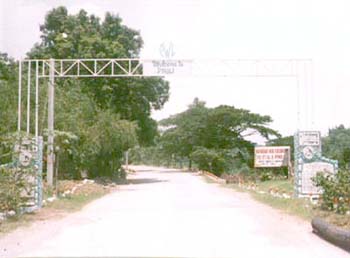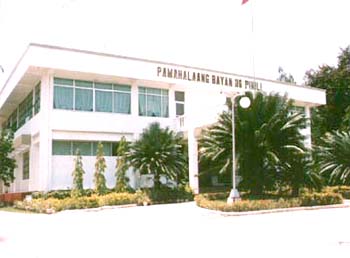

| Municipality of PINILI |

Historically, the town of Pinili is young and small in comparison to other municipalities of the province. It is located northeast of Badoc, southeast of Currimao and just south of the town of Batac. In 1900 and years before it, the place was covered with thick forest where narrow trails of wild pigs and deers had prevailed. How Pinili became a municipality is told in the following account: During the Filipino-American War in 1900, Msgr. Gregorio Aglipay, a Filipino revel priest who opposed the authoritative domination of the Spanish priests in the church during the Spanish era gathered many men to combat the invading American forces in the Province. The priest soldier after he had organized his army, eventually selected the thick forest mountains of Pinili as their refuge. When the war was over, the people, most of them were natives of Badoc, Paoay and Batac in the northern portion. Those activities were done only after permission was granted from the Philippine Commission in Manila to form a town. On April 15, 1919, a meeting was held in the settlement. The purpose was to elect a new breed of leader to help the aged Lafradez in carrying out the plan. The new leader was Ruperto Valbuena, a public school teacher of the place. Valbuena, after assuming his task, then prepared a petition which he forwarded to Msgr. Gregorio Aglipay requesting his assistance to the movement. In return Msgr. Aglipay gave his assurance and full support which eventually put the movement in an encouraging situation. In the same year the conference of Valbuena and the Hon. Fautino Adierte, representative of the 2nd District of Ilocos Norte at that time, another petition was made to request the higher authorities to approve the move in establishing a municipality. The petition was signed by 1,188 inhabitants of the 24 barrios comprising the proposed town. Each copies of the signed petitions were forwarded to the Provincial Board of Ilocos Norte, the House of Representatives, the Senate, and the Office of the Governor General of the Philippines. In the House of Representative, the bill which was presented by Rep. Adiarte was unanimously approved by the lawmakers. It was Senator Santiago Fonacier who sponsored the bill in the Senate. Like in the House of Representatives, it did not meet any predicament whatsoever, so the bill was enacted into law. On November 28, 1919, the Provincial Board of Ilocos Norte passed a Resolution No. 883 requesting His Excellency, the Governor General of the Philippine to order of the barrios from the municipalities to which they belong in favor of the newly created municipality called Pinili. On December 20, 1919, the Governor General of the Philippines signed the Executive Order No. 92 ordering the establishment of a new municipality in Ilocos Norte, the town of Pinili effective January 1, 1920.
Pinili which means "chosen" is the official name of the town because General Gregorio Aglipay selected it as the place of refuge for his army; the place was inhabited only with selected people; and the place was chosen as the site of the poblacion because of its historical value. The fast development of the towns is attributed to the concerted efforts of the people. Roads and bridges, including drainage canals in the poblacion, are already constructed. The old town hall on top of the hill was replace by the concrete one. Eighteen elementary school and two secondary school of buildings were repaired and all of this was done by the Ministry of Public Works and Highway and the Muninicipal government of Pinili. The public plaza was beautified and is now considered the most beautiful plaza in the province. In the rural barangays, roads were widened, beautified and constructed. Under the Rural Development Corporation, the Pinili - Nueva Era road was constructed and some others are still being built, with assistance coming from the national government. Farming is the one sources of livelihood of the people. Farmers produce rice, tobacco, sugarcane, maguey, and vegetables. They concentrate on planning tobacco, because it commands a high price. Meanwhile garlic is also a promising crop. This is produce in a large amount every planting season. The thick forest that surrounds the town is an additional of income. During summer, fruits like duhat, siniguelas and camangeg are gathered and sold in local market. Women who migrated from Paoay make towels, blankets and bathrobes for sale. Livestock raising is also an industry. Farmers raise goats and cattle for home consumption and for sale. |






